Roasted Lemon-Garlic Boneless Turkey Breast
Updated Nov 06, 2024
This post may contain affiliate links. Please read our disclosure policy.
An easy rub gives this moist and tender turkey breast great flavor. A great option for a smaller Thanksgiving group or for a turkey dinner any time of year.
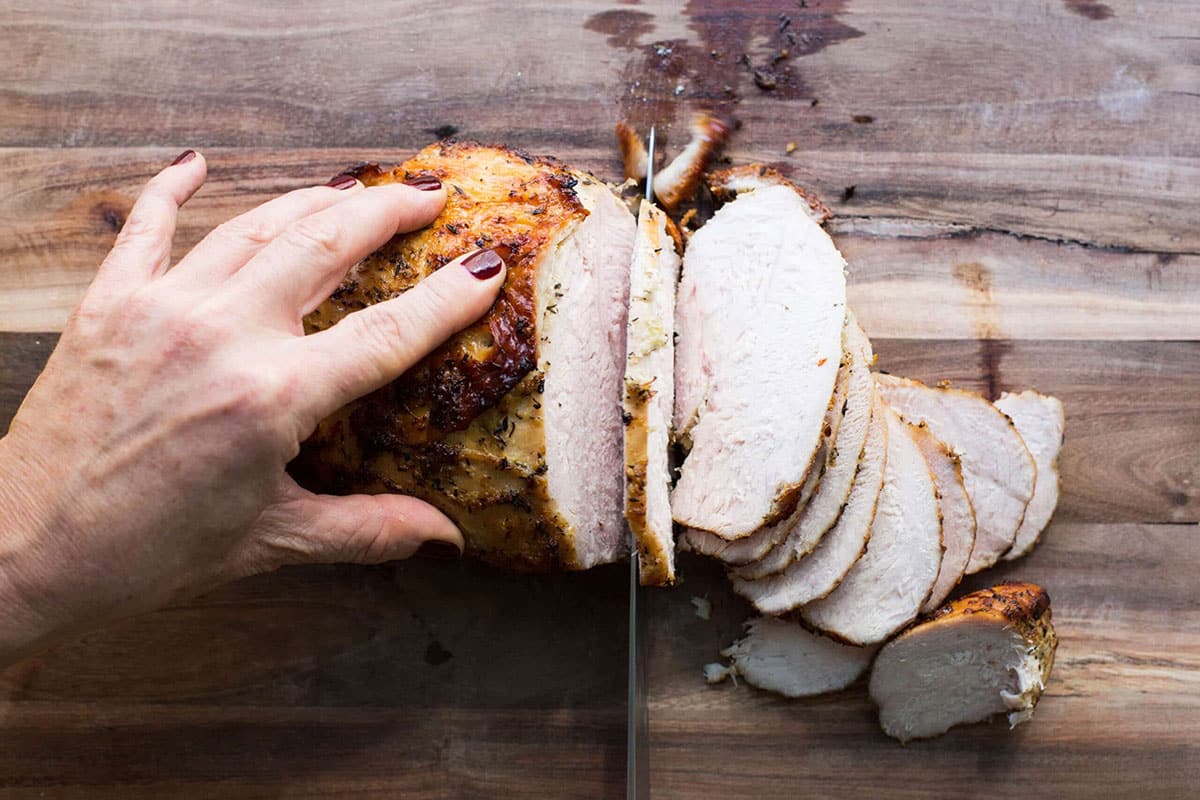
Sometimes, you need a smaller amount of turkey for a smaller Thanksgiving gathering. Sometimes, you want to make sure you have extra breast meat for the white meat turkey lovers at the table. And sometimes, you just want turkey for dinner, and it doesn’t make sense to roast a whole turkey for an average-sized family. This juicy, flavorful, simply roasted boneless turkey breast recipe is the answer. And it takes about the same amount of time as roasting a chicken!
Make sure to avoid turkey breasts injected with saline solution, which will taste too salty. Try to buy fresh turkey breast, not frozen, which is more likely to be injected with saline. You can also ask a butcher to bone a turkey breast for you. In that case, you may have to buy the two halves, but you also might be able to get just one boneless half, which is what is called for here.
Serve this with Cornbread and Mushroom Stuffing, Sautéed Kale and Brussels Sprouts with Bacon, or Mashed Sweet Potatoes with Roasted Garlic.
By signing up, you agree to our Privacy Policy.
What's In This Post?
- Ingredients
- How to Make Lemon-Garlic Roasted Turkey Breast
- Making a Moist Turkey Breast
- Tips
- Cooking Time for Boneless Turkey Breast
- Storage and Leftovers
- What to Serve with Lemon-Garlic Roasted Turkey Breast
- More Thanksgiving Recipes
- More Lemon-Garlic Recipes
- Roasted Lemon-Garlic Boneless Turkey Breast Recipe

An easy rub gives this moist and tender turkey breast great flavor. Great Thanksgiving option for a smaller group.
Ingredients
- Boneless turkey breast – For those white meat lovers.
- Lemon juice and zest
- Shallot – You can also use half a small onion instead.
- Garlic – Adds a great flavor.
- Extra-virgin olive oil – You can use softened or melted butter instead of olive oil if you prefer.
- Salt and freshly ground black pepper – To taste.
- Dried thyme – For an herby earthiness. You can use rosemary instead if you prefer.
How to Make Lemon-Garlic Roasted Turkey Breast
- Prepare the marinade: In a small food processor, blend the lemon juice, zest, shallot, garlic, olive oil, salt, pepper, and thyme until it becomes a paste.
- Prepare the turkey: Pat dry the turkey breast and then use your hand to rub the paste over and under the skin, covering the breast completely.
- Cook and serve the turkey: Place the turkey breast in the roasting pan, pour the chicken stock into the bottom of the pan, and roast for about 30 minutes at 450 degrees, then reduce the heat to 325 and continue cooking for about 30 to 45 minutes until the internal temperature is 160 degrees. Slice and serve.

Making a Moist Turkey Breast
To ensure a moist and flavorful turkey breast, there are a few things you can do.
Ideally, two days before cooking the turkey, you should brine your turkey breast. Then, remove the turkey from the brine and pat dry. Make the rub/marinade mixture and slather it on the turkey (rubbing it under and over the skin) the night before cooking. Toss it into a big zipper-top bag and refrigerate it. This will definitely give the meat more juiciness and more of the lemony-herb flavor.
Kitchen Smarts
You can do one or the other of these steps if you don’t have time for both.

Tips
- If the skin seems to be browning too quickly, you can tent the breast with aluminum foil.
- Garnish the serving platter with fresh herbs for a pretty presentation. Thyme and rosemary are nice.
- Use the pan drippings to finish your make-ahead turkey gravy if you want to go the whole nine yards. Adding the chicken broth or stock to the bottom of the pan helps prevent the pan drippings from burning.
Cooking Time for Boneless Turkey Breast
This recipe works with pretty much any size boneless turkey breast; though, of course, the baking time will be longer the larger your turkey breast is. The initial half an hour is at 450 degrees to brown up the skin nicely, then the temperature is lowered to 325 so the meat stays juicy and doesn’t dry out. Most boneless turkey breasts are around 3 pounds. Most importantly, check for doneness with an instant-read thermometer — you want the internal temp to be 160 degrees when you take it out.
Let the turkey breast sit for at least 20 minutes before slicing. The temperature will continue to rise a bit after it is removed from the oven, so the meat will continue to cook, and the temperature will continue to rise for about 10 to 20 minutes. Letting it sit allows the meat to come to the safe temperature of 165 degrees and lock in the juices, so when you slice it, it stays moist and tender and doesn’t dry out.
Storage and Leftovers
The turkey will stay good for up to 4-5 days in the fridge.
There are so many things to do with your leftover turkey. And, of course, everyone loves a good turkey sandwich. You can also freeze leftover turkey for up to 6 months.
What to Serve with Lemon-Garlic Roasted Turkey Breast
More Thanksgiving Recipes
- Spoonbread Corn Pudding
- Pan-Roasted Brussels Sprouts with Chorizo and Toasted Bread Crumbs
- Romaine, Pear, and Goat Cheese Salad
- Shredded Sautéed Brussels Sprouts
- Cajun Roasted Turkey
- Instant Pot Turkey Breast

More Lemon-Garlic Recipes
There’s something special about the combination of lemon and garlic, so don’t stop at turkey breast! Try these recipes, too.
- Lemon-Garlic Chicken Thighs
- Baked Lemon-Garlic Tilapia
- Lemon-Garlic Semi-Boneless Leg of Lamb
- Lemon-Garlic Air Fryer Chicken Breasts
Pin this now to find it later
Pin It
Roasted Lemon-Garlic Boneless Turkey Breast
Ingredients
- 1 (3-pound) turkey breast
- Juice and zest from one lemon
- 1 shallot
- 2 cloves garlic
- 3 tablespoons extra-virgin olive oil
- 1 teaspoons kosher salt
- ½ teaspoons freshly ground black pepper
- 1 teaspoon dried thyme
- ½ cup chicken broth or stock (or turkey broth or stock)
Instructions
- Preheat the oven to 450 F. Pat the turkey breast dry with paper towels. Place a rack in the roasting pan if desired.
- In a small food processor, combine the lemon juice and zest, shallot, garlic, olive oil, salt, pepper, and thyme. Blend until it becomes a paste.
- Loosen the skin from the turkey breast, and using your hand rub the paste over and under the skin, covering the breast completely.
- Place the turkey breast in the roasting pan, pour the broth into the bottom of the pan, and roast for 30 minutes. Reduce the temperature to 325 F, and bake until the skin is nicely browned and a meat thermometer shows an internal temperature of 160 F., about 30 to 45 minutes. Let the turkey sit in the roasting pan or on a cutting board for 20 minutes for the juices to redistribute and for the internal temperature to continue to rise to 165 F before slicing.
Notes
- Leftovers will last in the fridge for up to 5 days.
- There are so many things to do with your leftover turkey — and, of course, everyone loves a good turkey sandwich. You can also freeze leftover turkey for up to 6 months.
- If the skin seems to be browning too quickly, you can tent the breast with aluminum foil.
- Garnish the serving platter with fresh herbs for a pretty presentation. Thyme and rosemary are nice.
- Use the pan drippings to finish your make-ahead turkey gravy if you want to go the whole nine yards. Adding the chicken broth or stock to the bottom of the pan helps prevent the pan drippings from burning.
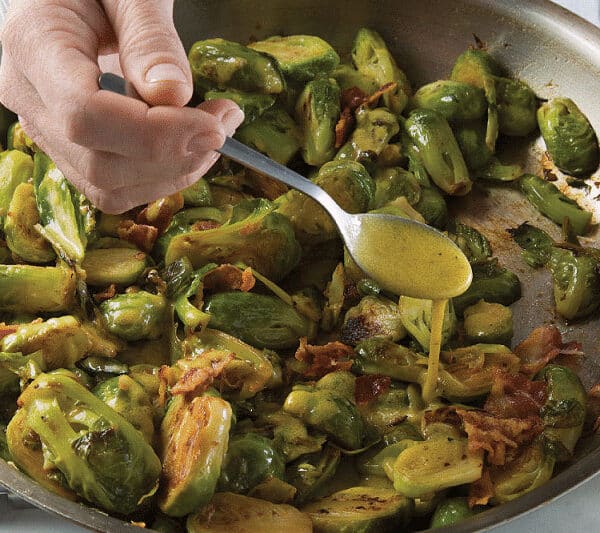
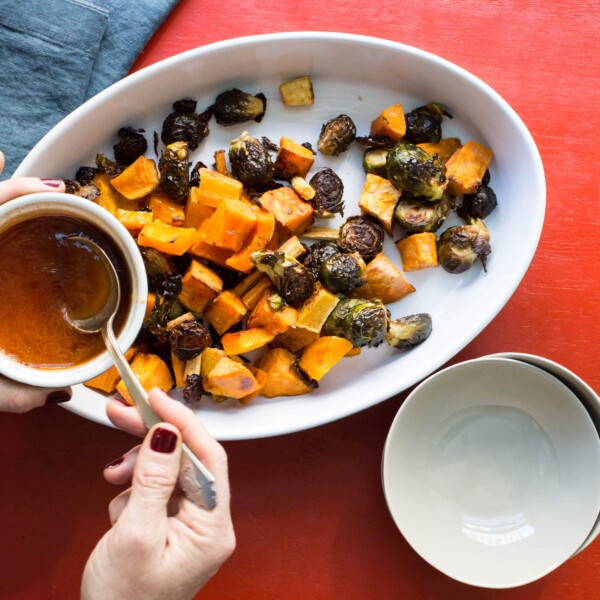


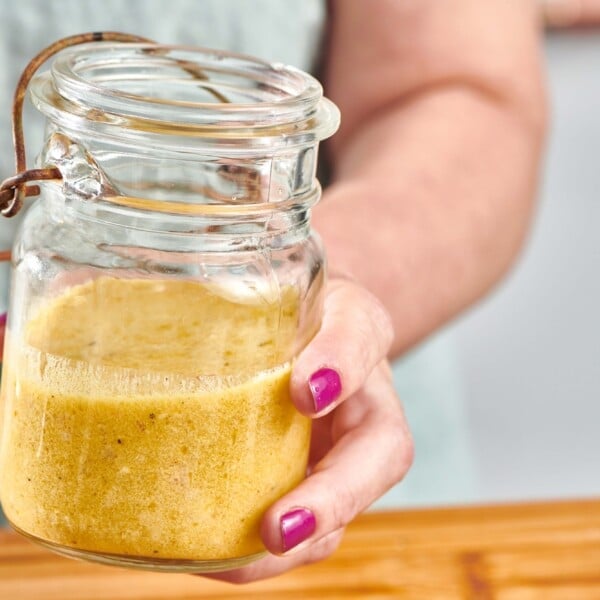
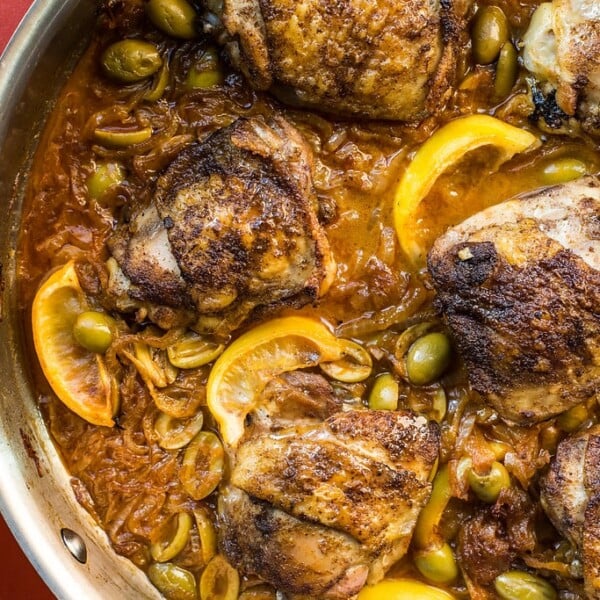
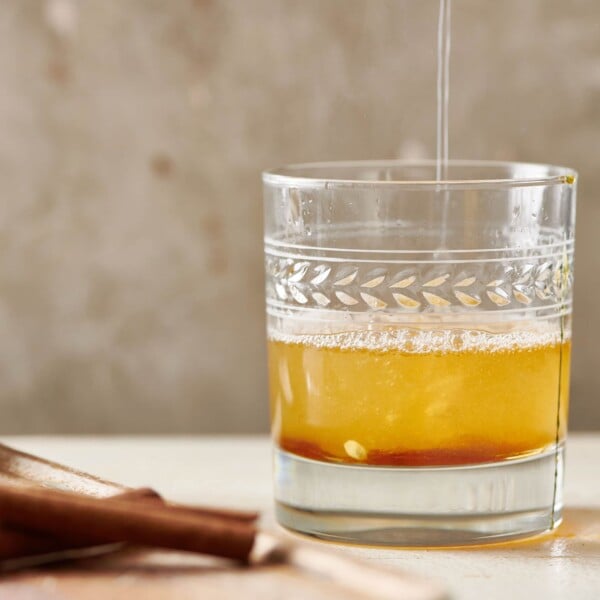









When turkey is in the roaster, do you cover? Or leave top exposed and open to the oven?
uncovered!
If a salt brine is used, do you still salt the turkey when cooking?
no you can skip the salt if you’ve brined it!
Katie, love the rub recipe, but notice you pull the breast at 170. Did your meat still come out moist, as I would pull at 160ish, knowing that it would still rise 5+ or so.
Thanks for the great website!!
You are totally right. I had an uncharacteristic burst of adhering too firmly to the FDA guidelines. It’s true, the temperature does continue to climb after you remove the food from the oven, which is called carryover cooking – that is 100% right. So, I would take it out at 160, and let it climb to 165 as you suggest. That’s probably what I did, only in writing the recipe (and knowing NPR was going to link to it), I stuck with the FDA super-safe recommended temp, but in the end, it’s truly about a moist breast, not overcautious food safety, right? (Unless there are babies or old people or sick people at the table- then, err on the side of super safety.) Thanks for making this point.
Sounds great! I can’t wait to try it. What is lemon zest?
Lemon zest is the brightly colored outer skin of the lemon. you can take it off with a vegetable peeler, and mince it, or use a zester or microplane specifically designed for that purpose. Either way, make sure to only take off the very bright outer layer, and not dig into the white at all, which is called pitch, and is quite bitter.
Sounds great, especially for a small Thanksgiving. About the Patriots game — well, I’m from Indianapolis. :-(
You can still come eat turkey at our house, we’re not exclusionary.